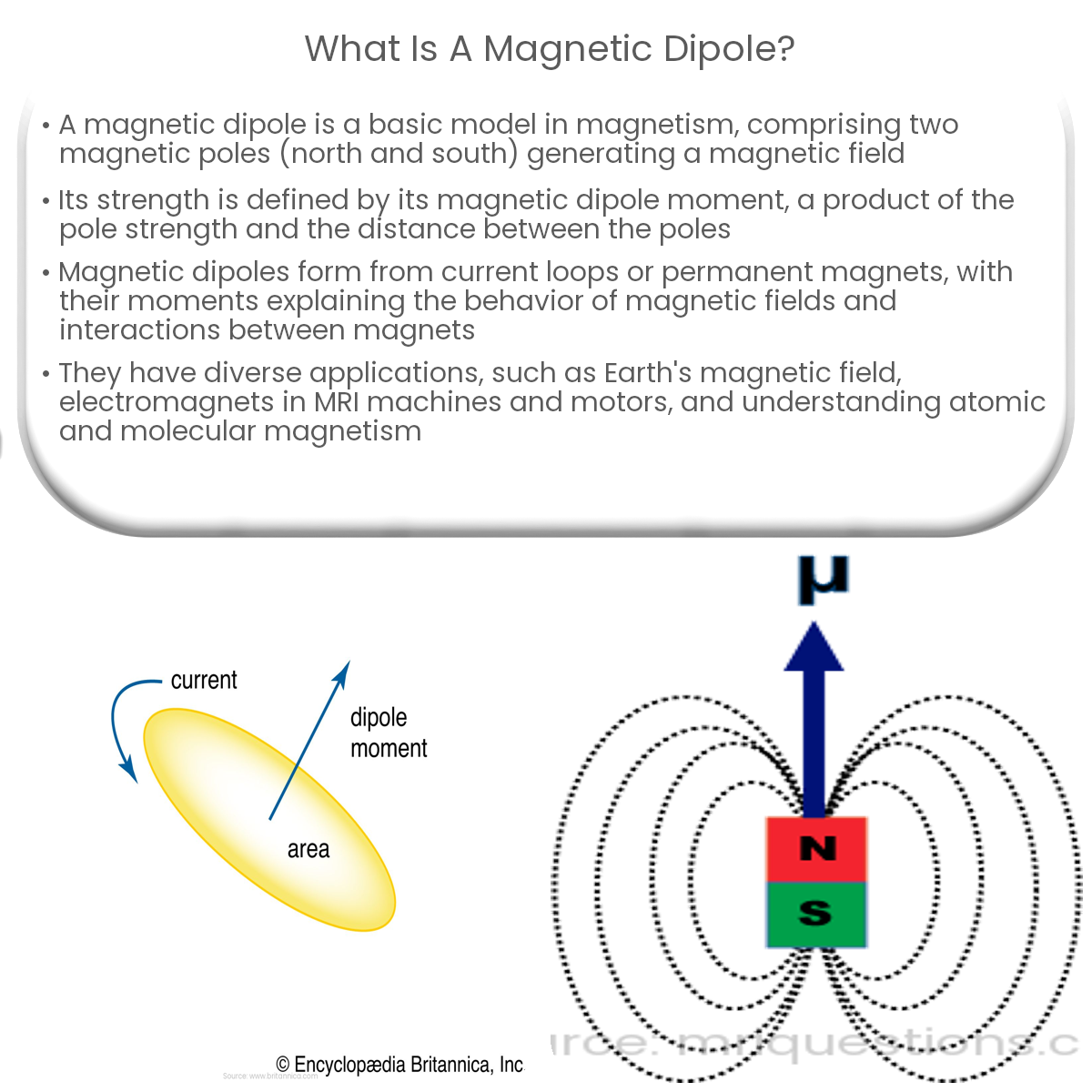A magnetic dipole is a simple magnetic system with a north and south pole, generating a magnetic field. It helps understand complex magnetic systems.
Introduction to Magnetic Dipoles
A magnetic dipole is a fundamental concept in magnetism, representing a simple magnetic system that generates a magnetic field. It consists of two magnetic poles, a north pole and a south pole, separated by a small distance. The magnetic dipole serves as a basic model for understanding more complex magnetic systems.
Characteristics of a Magnetic Dipole
The strength of a magnetic dipole is defined by its magnetic dipole moment, denoted as m, which is a vector quantity. The dipole moment is the product of the pole strength and the distance between the poles. The direction of the magnetic dipole moment points from the south pole to the north pole.
A magnetic dipole placed in an external magnetic field experiences a torque that tries to align its dipole moment with the external field. This torque is given by the cross product of the magnetic dipole moment and the magnetic field, τ = m × B.
Magnetic Dipole in Practice
Although isolated magnetic poles, or monopoles, have never been observed in nature, magnetic dipoles can be formed by current loops or permanent magnets. A current loop generates a magnetic field due to the flow of electric current, and the loop’s magnetic dipole moment is proportional to the current and the loop’s area.
Permanent magnets can also be considered as magnetic dipoles, with their magnetic dipole moment originating from the alignment of microscopic magnetic domains in the material. These magnetic dipoles help explain the behavior of magnetic fields and interactions between magnets.
Applications and Examples
- Earth’s magnetic field: The Earth itself acts as a giant magnetic dipole, with a magnetic field generated by the movement of molten iron in the Earth’s core. This magnetic field is responsible for the Earth’s magnetosphere, which protects us from solar wind and cosmic radiation.
- Electromagnets: Electromagnets, used in various applications like MRI machines and motors, often have a magnetic dipole moment that can be controlled by adjusting the current flow through the coils.
- Atomic and molecular magnetism: At the atomic level, magnetic dipoles arise due to the motion of electrons around the nucleus and their intrinsic magnetic moments, called spin. These dipoles play a crucial role in understanding the magnetic properties of materials and the principles of NMR spectroscopy.
In summary, magnetic dipoles are essential for understanding the behavior of magnetic fields and the interactions of magnets, with applications ranging from Earth’s magnetosphere to the atomic level.




